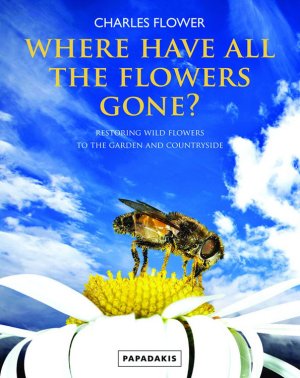by Charles Flower
Papadakis Publisher, London
ISBN 978-1901092-82-0
£25
 |
The tantalising prospect of a flower filled countryside is bound to excite those who love the countryside & mourn the passing of flower filled meadows, road verges and banks. It is likely to be appealing to moth & butterfly enthusiasts who know so well the importance of plants to these species. Chapter after chapter offers incredibly sound advice on how to create wonderful wild flower areas.
Charles Flower is not just passionate about restoring wild flowers to the countryside, he has amassed valuable knowledge & experience through doing this on his own Wiltshire farm & may other sites through out the country. He is regarded as a pioneer in these techniques by many and held in high esteem. His knowledge and love of wild flowers and grasses is very apparent to the reader as is his interest in all the other wild life that can be found in rich habitats.
Charles Flower's book has the potential to appeal to a wide range of readers. Walking through a meadow brimful of wild flowers, butterflies and bees is a magical experience. Perhaps the next best thing, especially on a winter's day, is leafing through this book. And I suspect that that is the first thing many people will do. The beautiful pictures just draw the reader on and on through the book. But this is not just a book of pretty pictures! Very soon interest will be captured by the detailed history of the changes in agriculture which inadvertently left the countryside devoid of some of our best loved wild flowers along with the wild creatures they supported. Pictures of farming in years gone by and the old fashioned meadows populate the early chapters, such a strong reminder for me of the countryside I knew as a child.
Attention is drawn to the change in mindset in countryside management with grant schemes paying money to farmers who encourage biodiversity. Subsequent chapters cover every aspect of how to reintroduce wild flowers from selecting seed and propagating wild flowers to growing them in a variety of situations - meadows, hedgerows, woodland and ponds. One chapter concentrates on the most threatened group - the cornfield annuals. This is vital information for any land owner or manager wishing to develop habitats rich in plants. Subsequent chapters will fascinate naturalists for they highlight how butterflies, birds and other wild life are responding to the creation of areas rich in plants, nectar and seed. Detailed advice is given on over thirty species of butterflies - how to cultivate the plants they need to lay their eggs on and recommendations on the flowers producing the best nectar.
Clearly this book is one which no farmer or land manager, intent on restoring wild flowers on their holding, should be without. Gardeners will need to be a bit imaginative in scaling down some of the suggestions to the size of their plot. The book provided not only sound technical advice but a huge measure of inspiration and is a total pleasure.